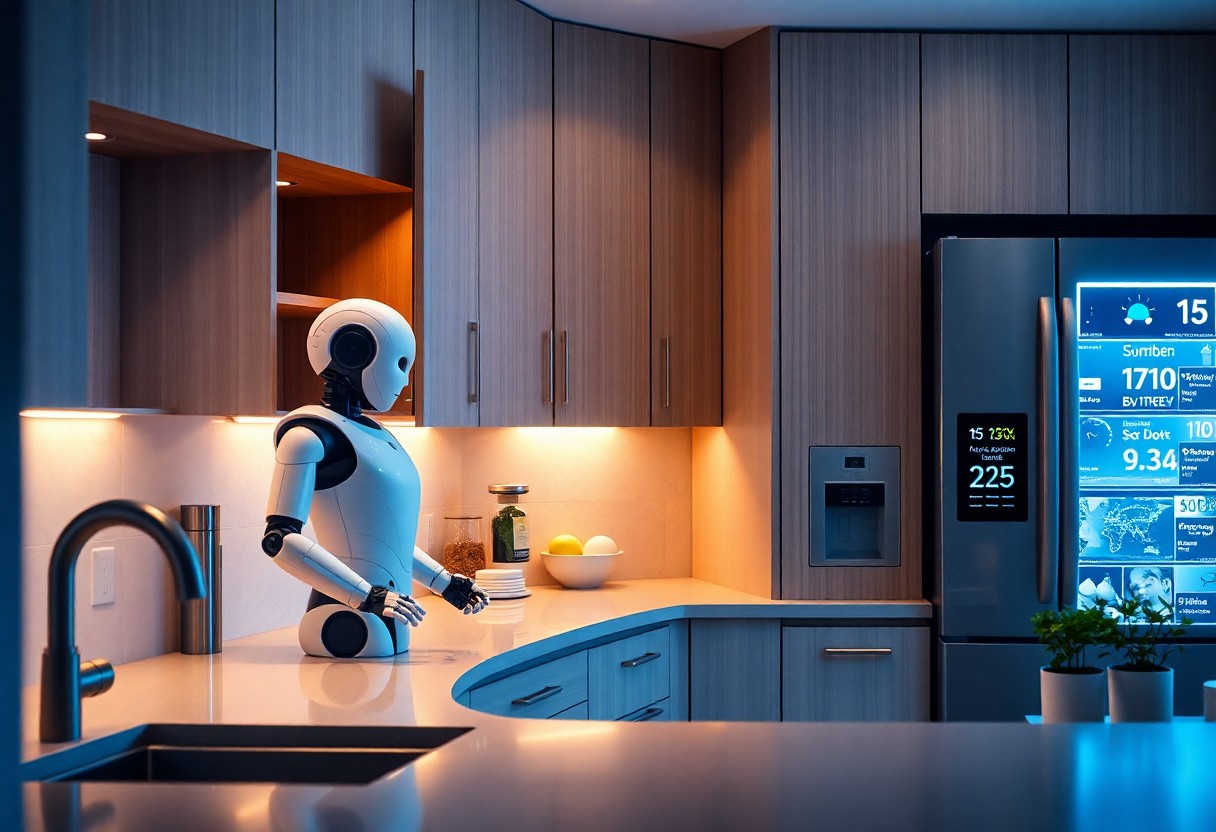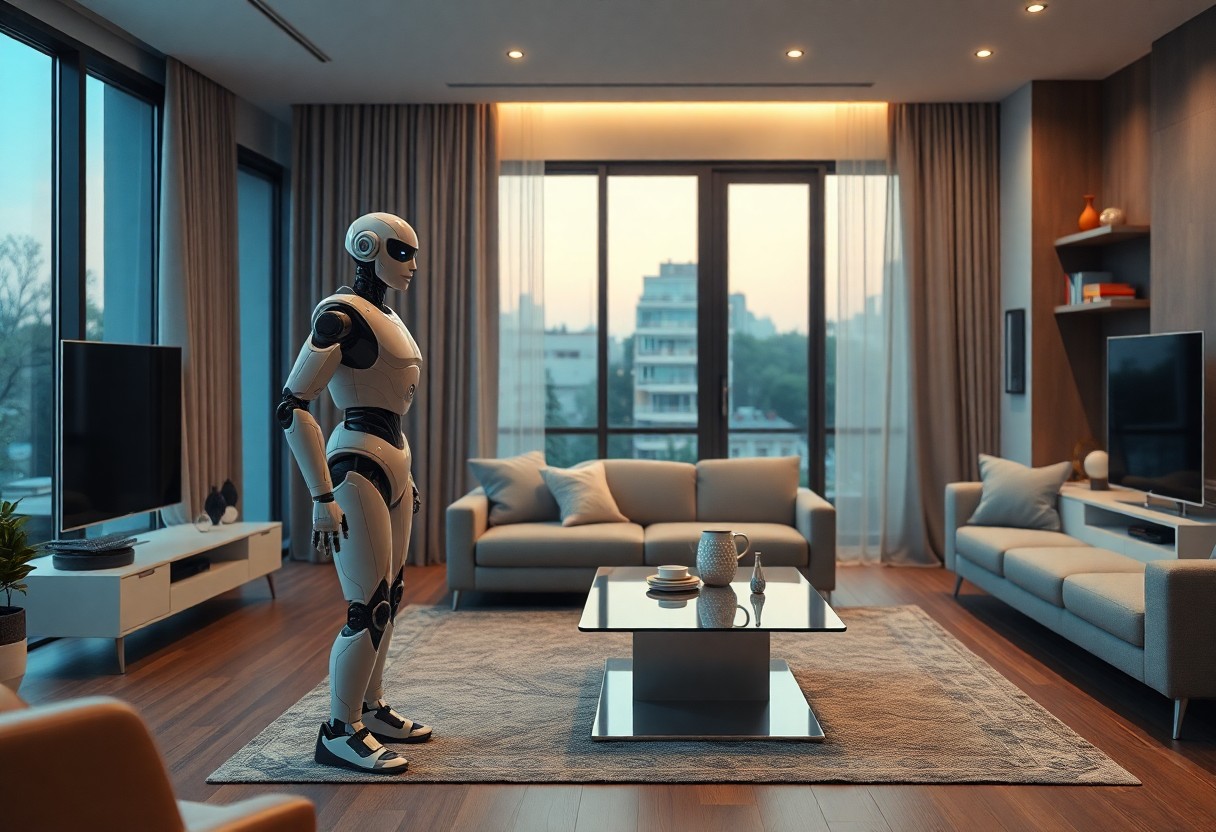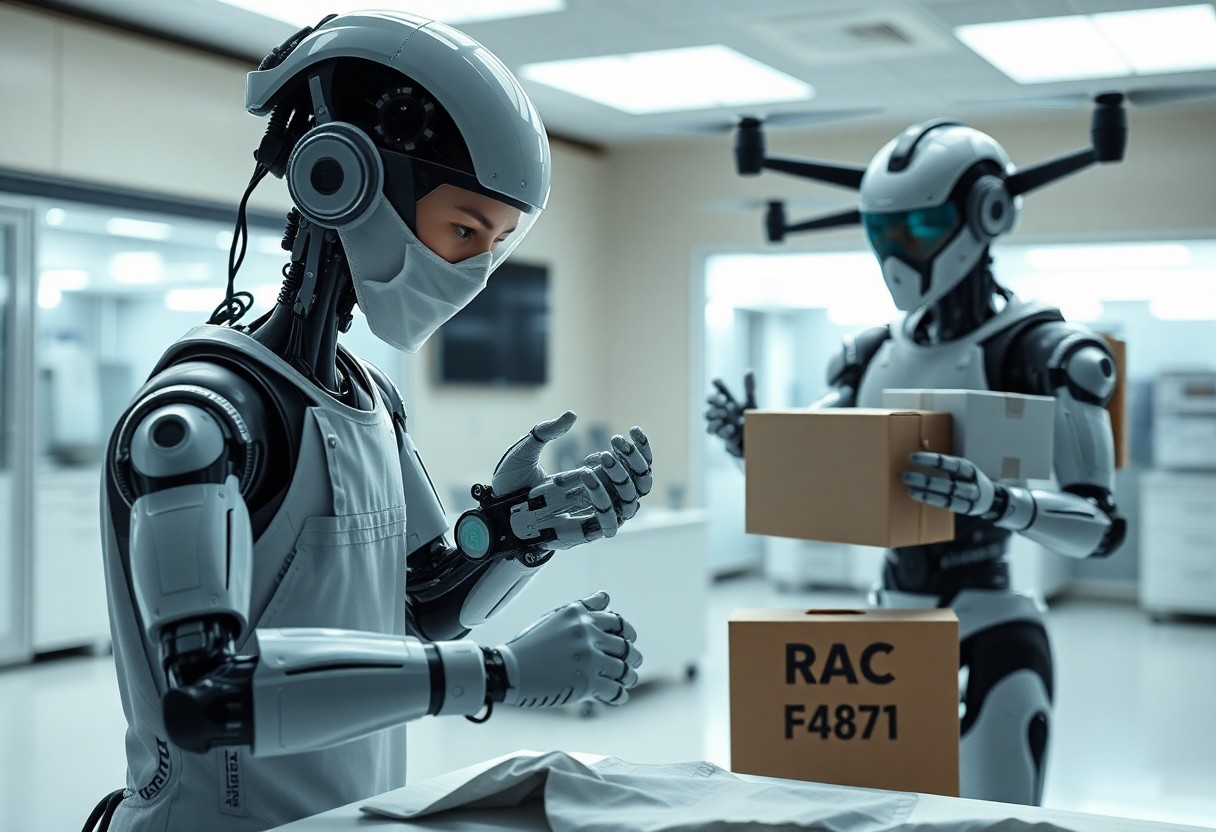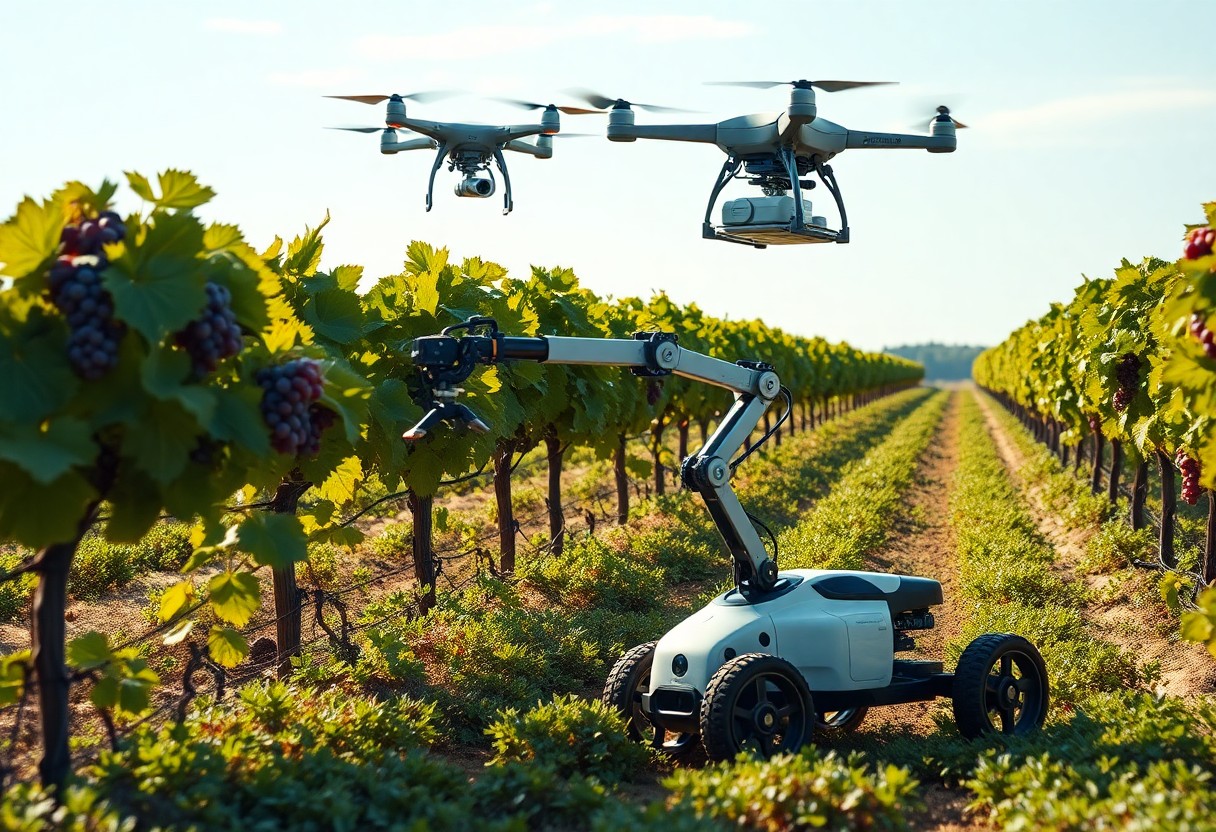Robots are transforming the way you manage your household, making daily tasks easier and more efficient. With advancements in technology, these home assistants are designed to cater to your specific needs, from cleaning and cooking to security and companionship. By integrating smart living solutions into your home, you can enhance your lifestyle, save time, and increase convenience. Explore how these innovative robots can help you create a more efficient and enjoyable living environment.
Overview of Home Assistance Robots
Home assistance robots are designed to facilitate everyday tasks, enhancing the comfort and efficiency of your living environment. These robots range from simple vacuum cleaners to more advanced systems that can assist with various activities, ensuring your home remains organized and well-maintained. As technology continues to advance, these devices are becoming increasingly capable, transforming how you interact with your home.
Types of Home Assistance Robots
Several types of home assistance robots cater to different needs and preferences. These devices may include:
- Robotic vacuum cleaners
- Smart kitchen assistants
- Robotic lawn mowers
- Home security robots
- Social companion robots
Knowing these options allows you to choose the right robot for your lifestyle.
| Type | Examples |
| Robotic Vacuum Cleaners | Roomba, Roborock |
| Smart Kitchen Assistants | Cooking robots, smart ovens |
| Robotic Lawn Mowers | LawnBott, Husqvarna |
| Home Security Robots | Ring, Arlo |
| Social Companion Robots | Jibo, ElliQ |
Key Features and Technologies
Home assistance robots come equipped with various features that enhance their functionality and usability. Key technologies include:
- Artificial intelligence for learning and adaptation
- Wi-Fi connectivity for remote control
- Obstacle detection sensors for navigation
- Voice control compatibility
- Mobile app integration for monitoring
The combination of these technologies makes it easier for you to manage your home.
These features leverage advancements in robotics, making home assistance robots more efficient and user-friendly. For instance, AI enables your robot to learn from past interactions, improving its performance over time. Many models connect with smart home systems, allowing seamless integration with your lifestyle. As these technologies evolve, the capabilities of home assistance robots will continue to expand.
- Energy-efficient operation to save on costs
- Customizable cleaning schedules for convenience
- Multi-room mapping for thorough coverage
- Safety protocols to protect pets and children
- Regular software updates for enhanced functionality
The integration of these key features significantly enhances their practicality and your overall experience.
Applications in Daily Life
Home assistance robots have become integral to modern living, offering innovative solutions that streamline daily tasks. From enhanced cleaning capabilities to companionship and care, these devices significantly reduce your workload, making life more convenient. For an in-depth look at these advancements, check out 5 Home Robots Designed to Make Life Easier.
Cleaning and Maintenance
Automated cleaning robots take on floor maintenance, handling both sweeping and mopping with ease. Models like the Roomba and Braava not only save you time but also ensure thorough cleaning. Advanced sensors help them navigate around obstacles, while app connectivity allows you to schedule cleaning sessions remotely.
Personal Companionship and Care
Robots designed for companionship and care provide benefits beyond physical assistance. For individuals living alone or the elderly, these robots can offer social interaction, reminders for medication, and even monitor health conditions. They can engage users with games, facilitate video calls with family, and respond to emotional cues, creating a more connected atmosphere.
The role of personal companionship robots is rapidly evolving, with innovations in artificial intelligence enabling deeper connections. For instance, the social robot Jibo can recognize faces and respond to emotions, making interactions more human-like. Additionally, robots like ElliQ learn from your preferences over time, adjusting their responses and activities to best suit you, thereby fostering companionship that feels personalized and intuitive.

Smart Living Integration
Integrating smart living solutions allows you to streamline various household functions through a unified platform. With the help of intelligent robots, you can manage everything from lighting and heating to cleaning and security in a seamless manner. Automation not only saves time but enhances your overall living experience by adapting to your preferences and habits, ensuring your home is always welcoming and efficient.
Connectivity with Smart Home Devices
Your home assistants can easily connect with a range of smart devices, from thermostats to voice-activated speakers. This interconnectedness enables you to control your home environment with voice commands or through mobile apps, simplifying daily routines. For instance, you can instruct your robot to adjust the lights or temperature as you return home, creating a comfortable atmosphere tailored to your needs.
Role in Home Security and Monitoring
Robots play a significant role in enhancing your home security and monitoring. Equipped with cameras and sensors, these devices can alert you to unusual activity, allowing you to take swift action. Some robots can provide real-time video feeds to your smartphone, ensuring you’re always aware of what’s happening in and around your home.
Robots in home security are advancing rapidly, with features like facial recognition and motion tracking. These capabilities help you distinguish between family members and potential intruders, significantly reducing false alarms. Additionally, many systems integrate with existing security cameras and alarms, allowing for a comprehensive security solution. With notifications sent directly to your device, you remain in control, giving you peace of mind whether you’re at home or away.
Benefits of Home Assistance Robots
Home assistance robots provide a range of practical benefits that can significantly improve daily living. From completing household tasks to enhancing safety and security, these innovative devices are transforming home environments into smarter, more efficient spaces. By integrating with smart home systems, they offer convenience that saves you time and effort, allowing for a better balance between work and personal life while also improving overall well-being.
Convenience and Time-Saving
Utilizing home assistance robots means you can delegate chores like vacuuming, lawn maintenance, or cooking, freeing up your schedule for more enjoyable activities. These robots operate autonomously, reducing the time you spend on mundane tasks. For instance, a robotic vacuum can clean your floors while you focus on work or relax with family, reshaping how you manage your day-to-day responsibilities.
Enhancing Quality of Life
Home assistance robots contribute to a higher quality of life by providing consistent support in daily activities. These robots cater to various needs, from companionship for the elderly to reminders for medication, ensuring you receive the assistance necessary for maintaining independence. For example, a personal assistant robot can engage conversation, offer emotional support, and even connect you with loved ones, fundamentally transforming your living experience. As these technologies advance, their integration into your everyday routine will further enhance comfort, safety, and ultimately, well-being.
Challenges and Concerns
As robots become more integrated into daily life, various challenges and concerns emerge. Issues surrounding privacy and security, alongside the cost and accessibility of such technologies, can affect adoption rates and user satisfaction. Addressing these concerns is crucial for fostering trust and ensuring that the benefits of home assistance robots are fully realized.
Privacy and Security Issues
With the rise of smart home assistants, privacy and security become paramount. Many robots collect data to enhance their functionality, which can lead to potential breaches of personal information. Knowing how your data is stored, who has access, and what measures are in place to protect it is critical for maintaining your trust as a consumer.
Cost and Accessibility
The financial aspect of integrating robotics into your home can be a barrier. While the market for home assistants continues to grow, many advanced options remain prohibitively expensive for average consumers. Affordability varies widely, with some comprehensive systems exceeding $1,000, limiting access for many households.
In examining cost and accessibility, various factors come into play. Entry-level smart home robots often start around $200; however, more sophisticated devices with enhanced capabilities and advanced features can cost significantly more. Financing options and grants may help alleviate the burden for lower-income households, but gaps in access still remain. Additionally, ongoing maintenance and subscription fees can add to total ownership costs, impacting long-term viability for many users. As technology progresses, efforts to streamline production and reduce expenses will be key in making home assistance robots accessible to a broader demographic.
Future Trends in Home Robotics
The future of home robotics is poised for transformative advancements that will redefine everyday life. As technology evolves, you can expect smart home devices to become increasingly interconnected, enabling seamless communication and enhanced functionality. The integration of robots into homes will shift from basic assistance to more complex roles, allowing for greater autonomy and personalized experiences that cater to your living environment.
Advancements in AI and Machine Learning
Breakthroughs in artificial intelligence and machine learning are accelerating the intelligence of home robots, enabling them to learn and adapt to your preferences. As these systems gather data, they continuously refine their behaviors, resulting in more intuitive interactions. For instance, robots may anticipate your daily routines and manage tasks accordingly, enhancing your overall efficiency and lifestyle within the home.
Expanding Roles in Household Management
Household management is evolving with the integration of robots capable of taking on multifaceted responsibilities. Robots are not just limited to cleaning and cooking; they can now assist with scheduling, grocery management, and even health monitoring. This evolution allows you to delegate various tasks, creating more time for leisure and family activities.
As robots expand their roles in household management, you can leverage assistants that understand complex household dynamics. For example, smart algorithms can track inventory levels and automatically suggest grocery lists or meal plans based on your dietary preferences and usage patterns. This capability transforms mundane chores into streamlined processes, freeing you from repetitive tasks and empowering you to focus on more important aspects of your life. Enhanced automation will soon allow additional capabilities, such as coordinating family schedules and managing home security systems in unison, enriching your home environment.
Final Words
Ultimately, integrating robots into your home not only enhances convenience but also elevates your lifestyle. These advanced technologies can manage tasks efficiently, allowing you to focus on what truly matters. As you embrace smart living, you’ll discover that these robotic assistants are designed to adapt to your needs, making your daily routines more streamlined. With proper utilization, robots for home assistance can transform your living environment into a more organized and enjoyable space, proving to be invaluable companions in modern life.







